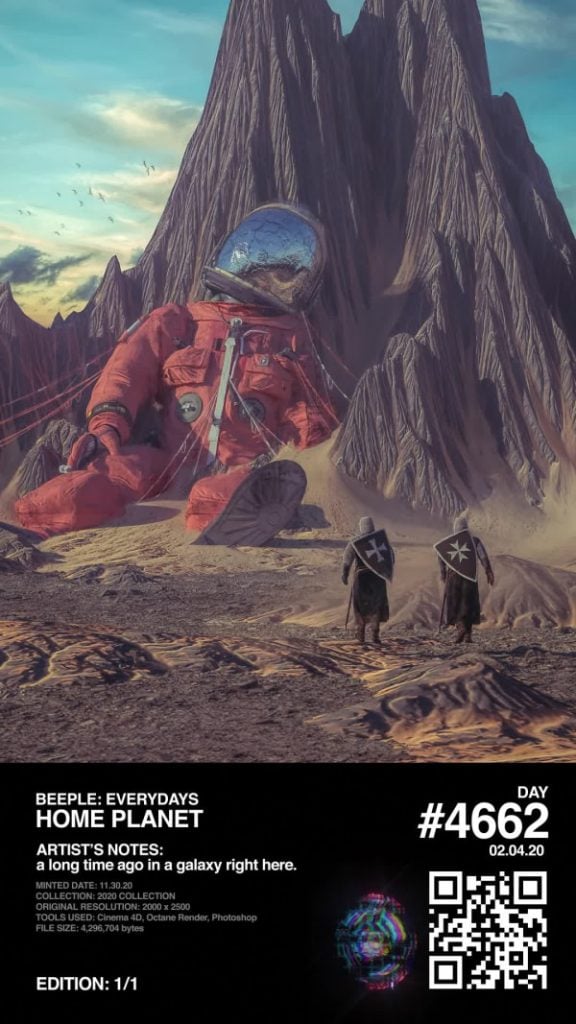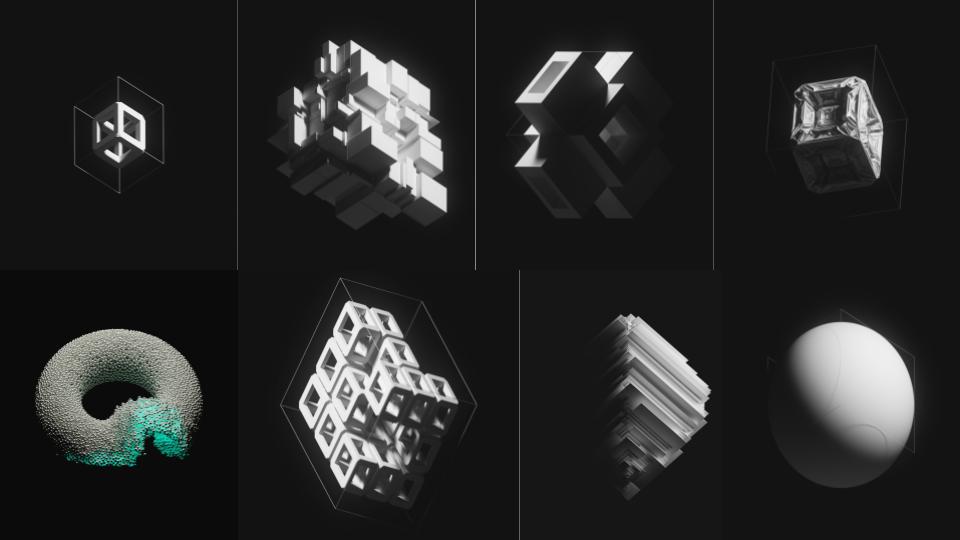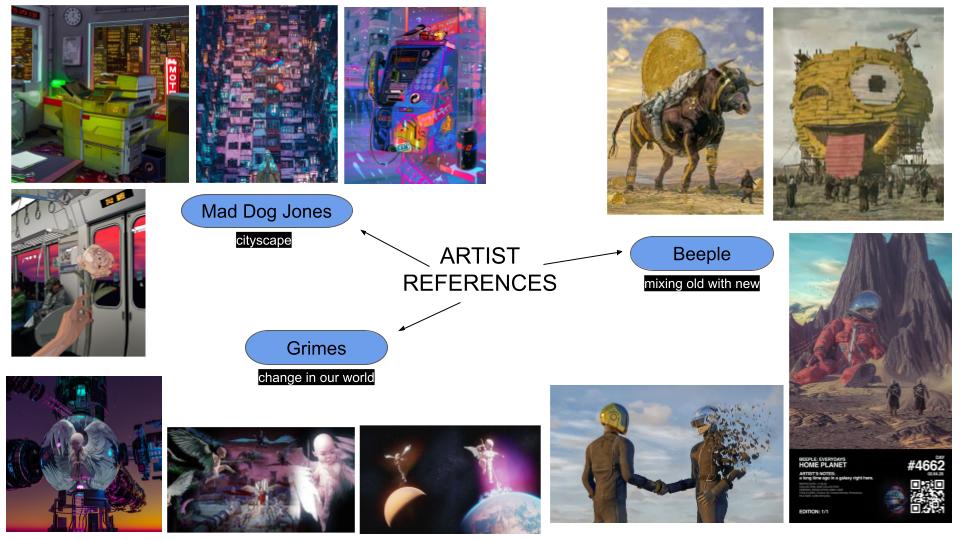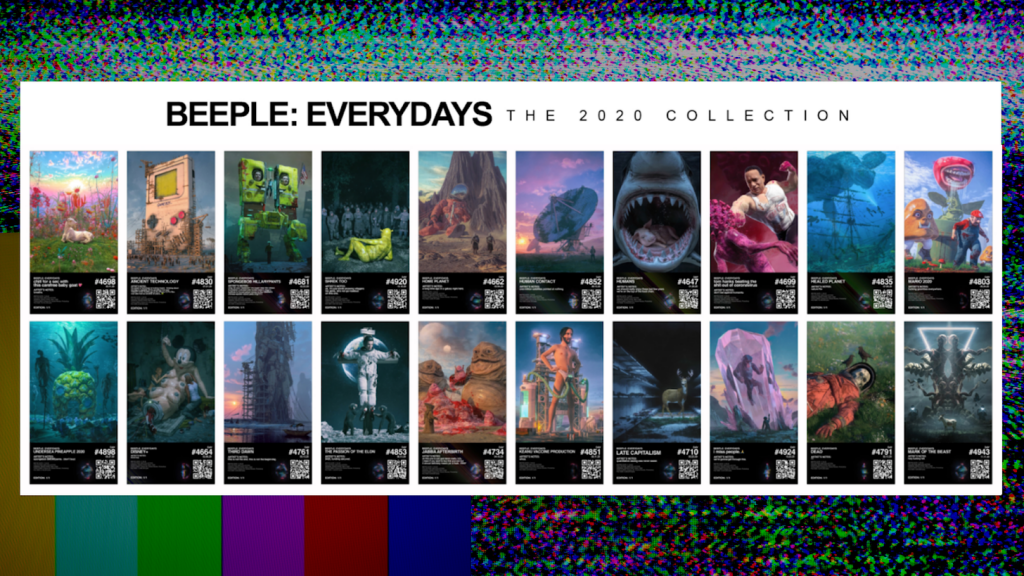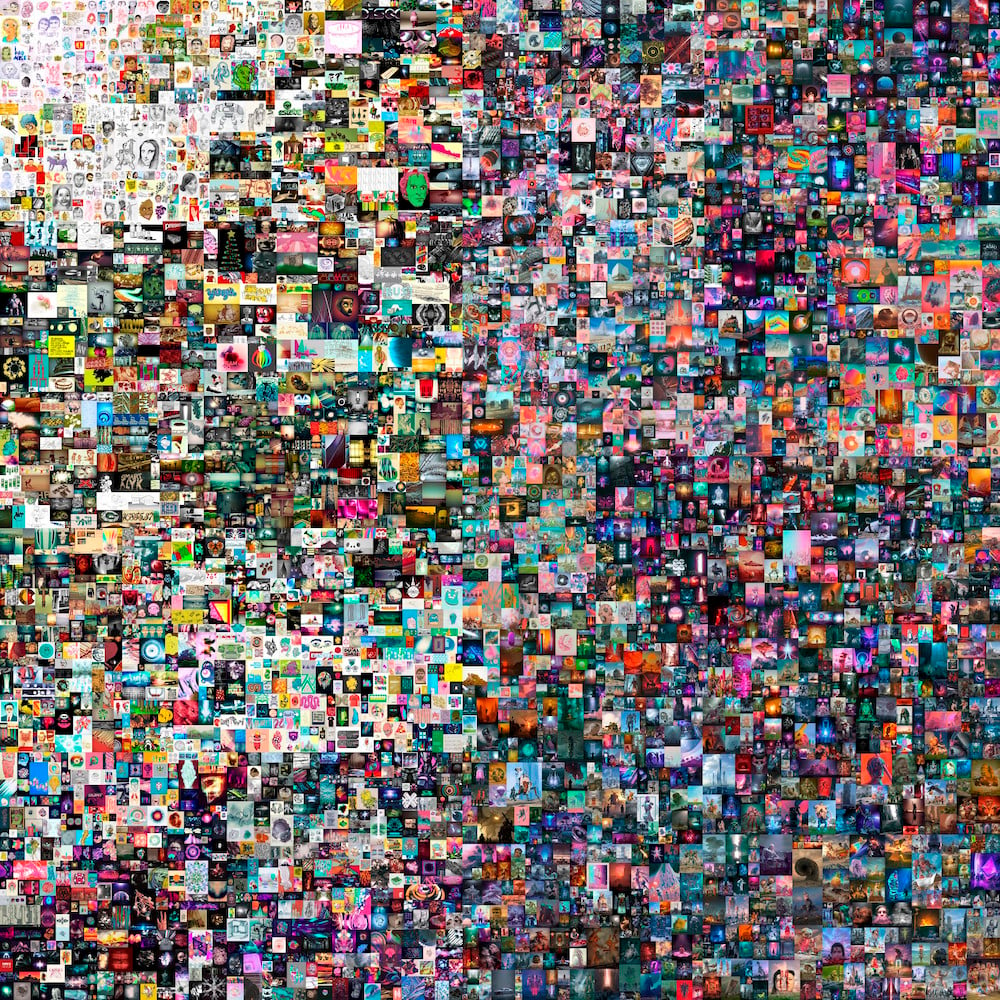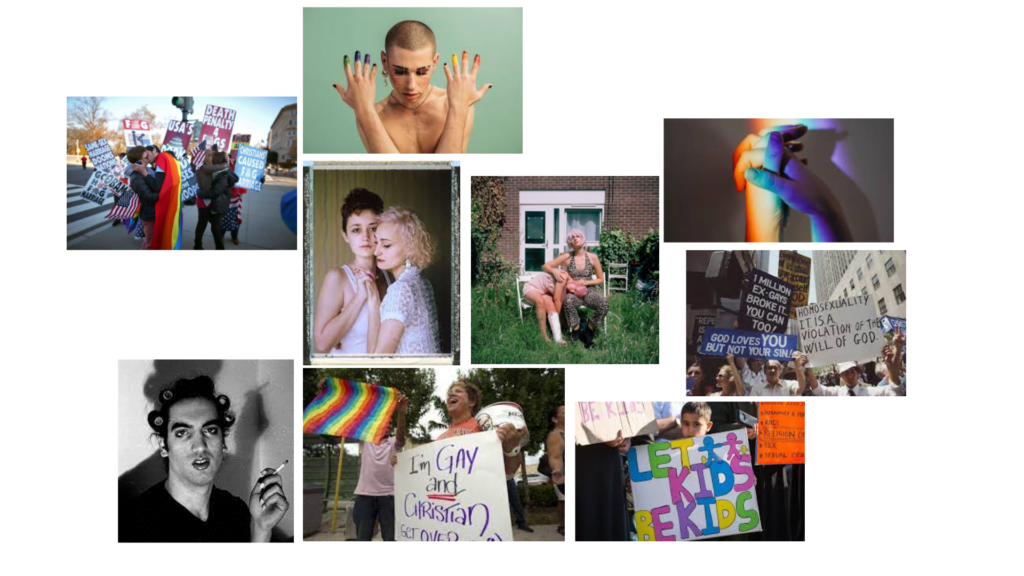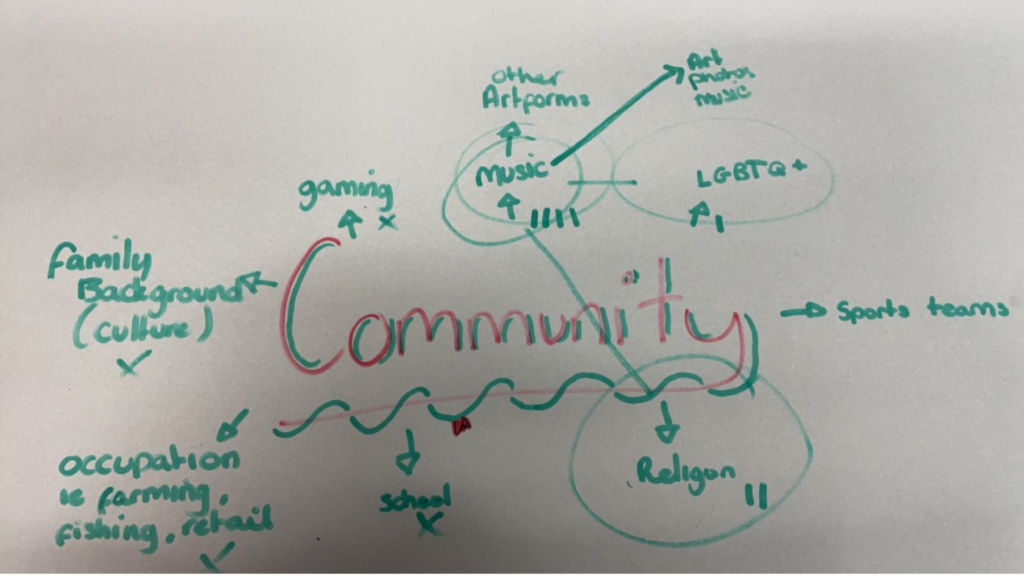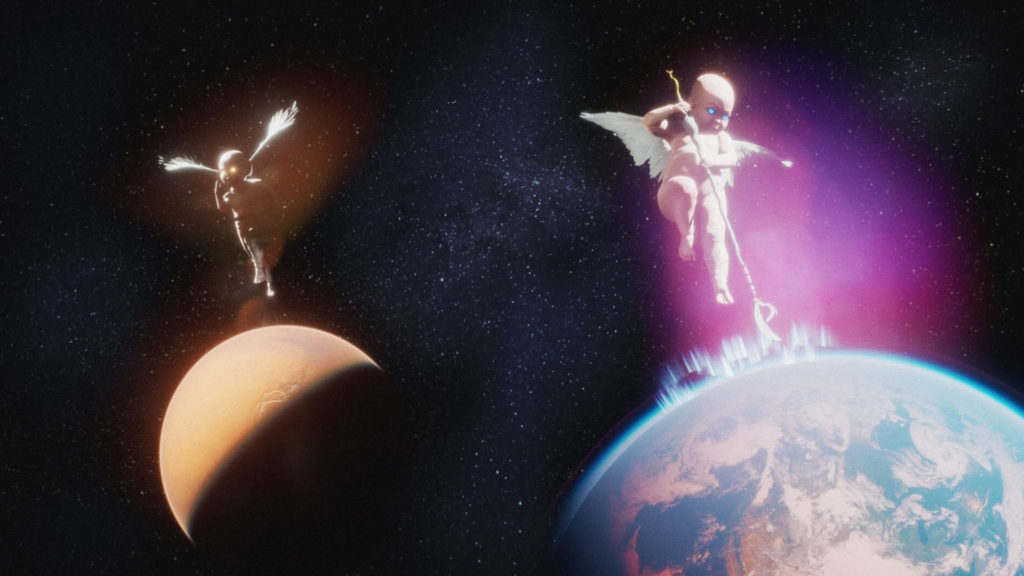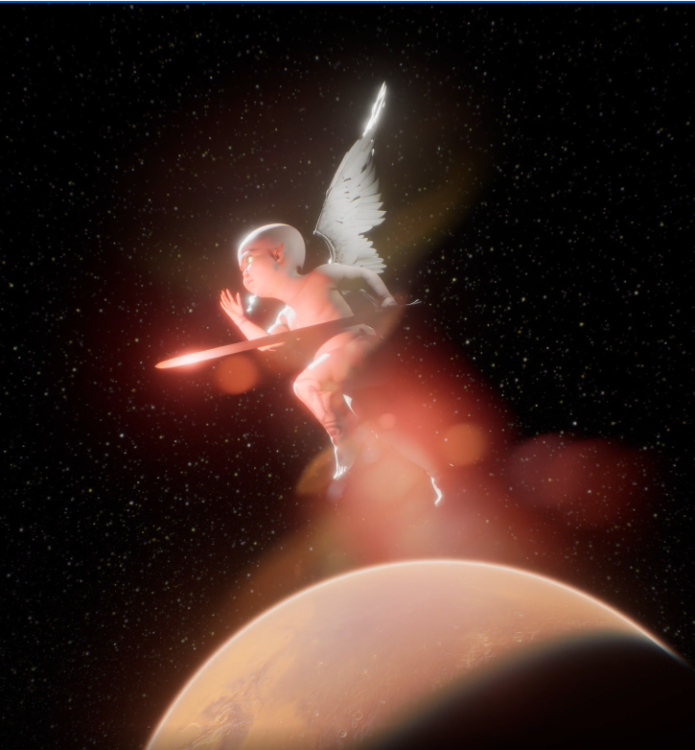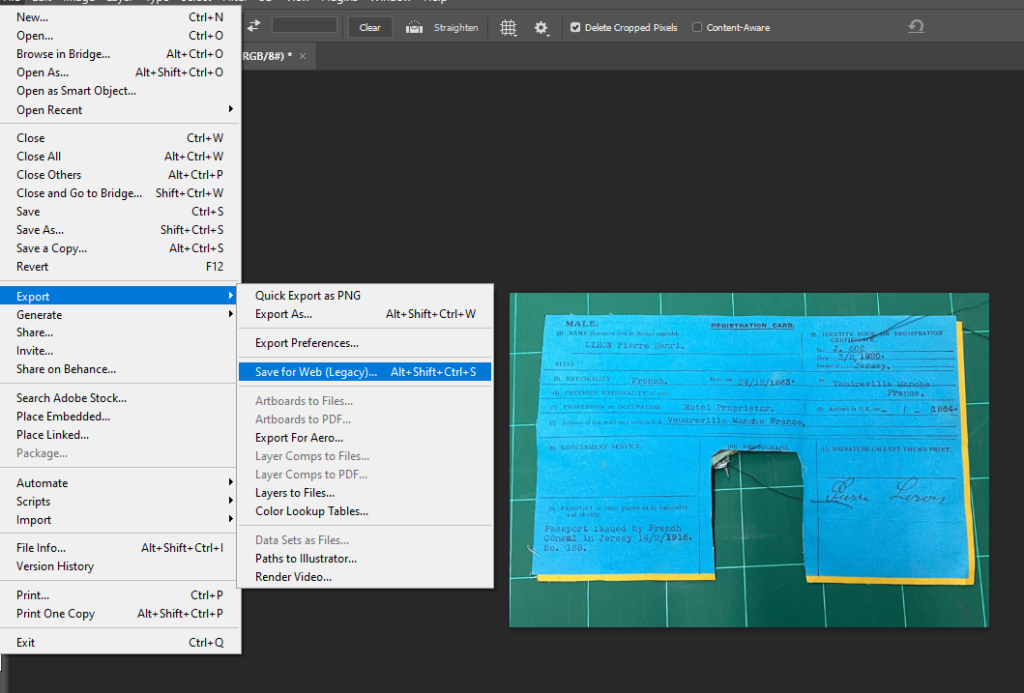Compare + Contrast
Context – I like how they both have interpreted the change in technology in their own way. Beeple has shown the past mixed with present day technology and Grimes has given us the future of technology.
Grimes’ ‘Newborn 4′ (from the WarNymph collection) is based on the theme of Anthropocene which is what we are currently doing in the world to harm the environment which is portrayed by the use of the Godess/baby cherub character who is fighting against the outdated ideas and corruption from the past. Whereas Beeples’ ‘Home Planet’ (from the Everydays 2020 collection) is based on the fear and obsession with developing technology which is shown by mixing the past with present. The two knights which are from the past where technology was very basic and did not really exist.
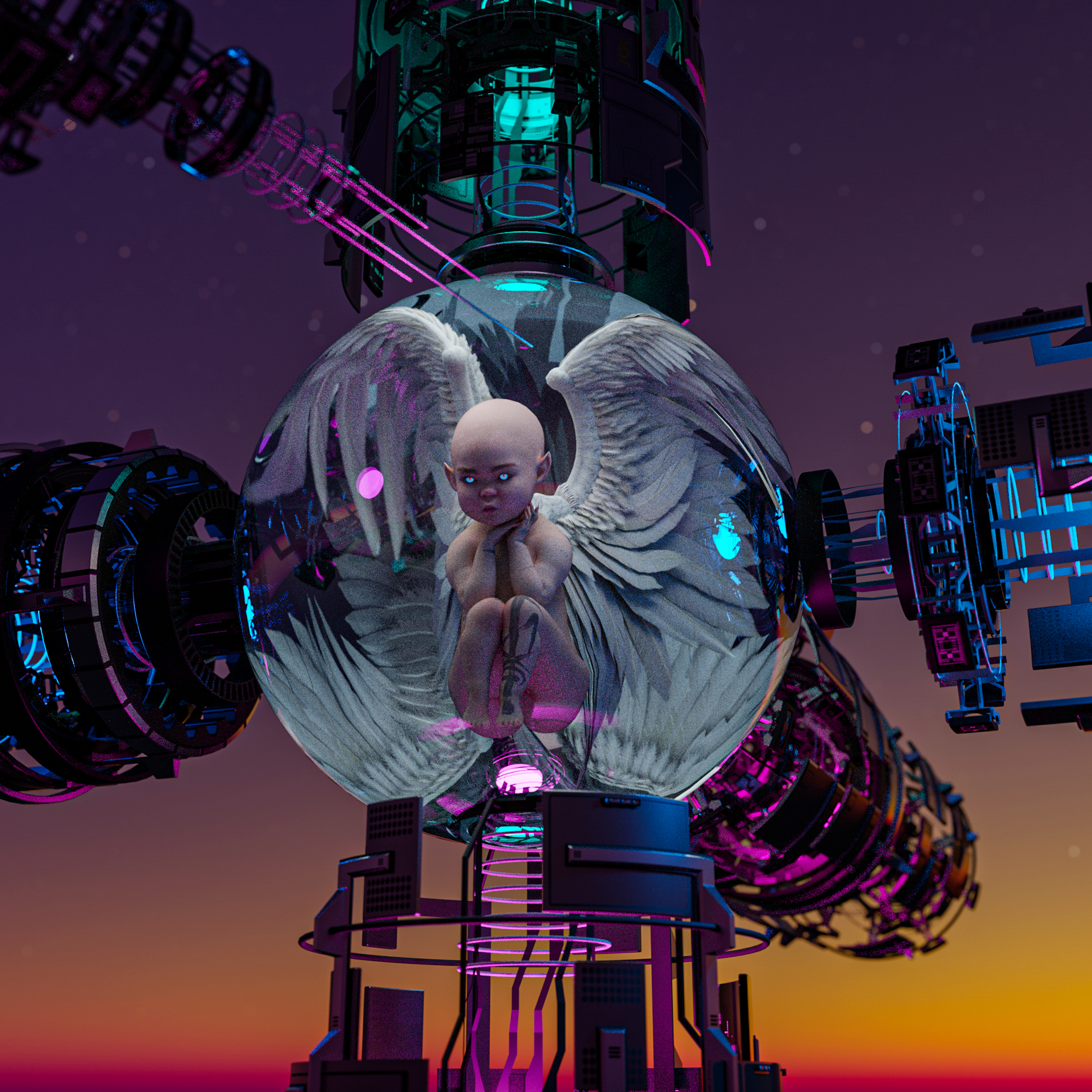
Formal Elements – They are both digital images not images taken from a camera of a real life thing meaning that the light is edited on and is not from natural light. The light in Beeple’s ‘Home Planet’ gives the sense of natural light coming from the left hand side and creates shadows throughout the image creating a lot of tonal range within the brown landscape. This is unlike Grimes’s ‘Newborn 4’ where there is not much light coming through and the image seems to be set at a sunset therefore not much natural daylight. However the image still has a high tonal range in the machinery and the cherubs wings creating a very contrasting look, making the machinery look even more manmade and technical. Beeple’s image is more warm toned than Grimes’s which is more cool toned but both have high saturation levels making the colours stand out to the viewer.
Beeples’ has a lot of depth to the image with multiple subjects in the foreground, middle ground and background which helps lead the viewers eye using the golden ratio/Fibonacci sequence to lead them around the image. Starting in the centre of the image at the astronaut then moving around to the top left corner following down to the bottom right hand corner where the knights are positioned creating a spiral shape. In contrast Grimes’ does not seem to follow any rule when leading the viewers eye around the image or have much depth but is similar as the viewer is originally drawn to the centre where the main subject (the cherub) is placed then the viewer explores around the cherub (the machinery).
Both images have different textures, for example Beeple’s is more natural textures like the land and rocky landscape whereas Grimes’s has the robotic, machinery texture making it feel more manmade than Beeple’s natural landscape. This also reflects in the lines and shapes in both images as Grimes’s is more geometric.
Mood – The mood in both images is sorrowful in the sense that the main subjects in both seem to be trapped or immobile. Beeple’s work has an astronaut which looks like it has been left there abandoned for a while and not moved like a derelict building, it may also reflect to the idea of an end to an era that has been left. Grimes’s main subject being the cherub trapped in a machine gives the sense of reflection towards what the world currently is and what is being done with technology.

